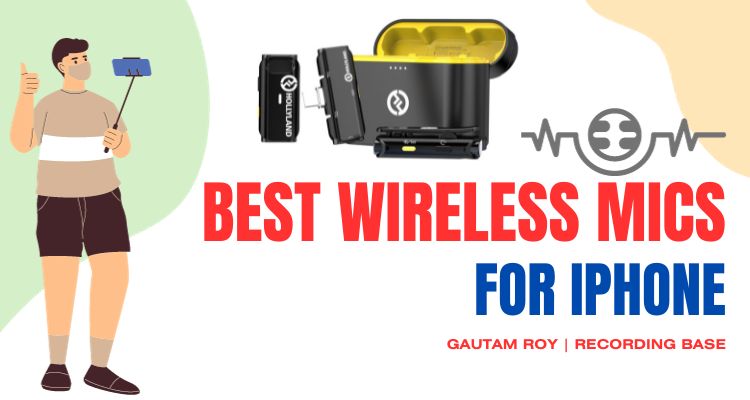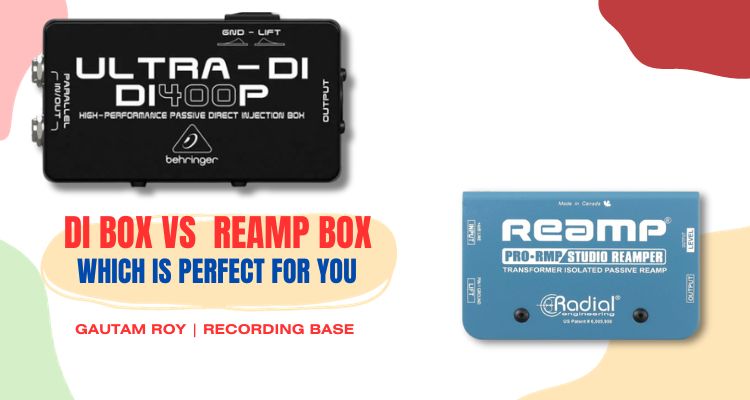Are you looking for the best microphone for vocals and acoustic guitar?
If so, you’ve come to the right place.
In this article, I’ll give you a list of the 10 best microphones for vocals and acoustic guitar, as well as some tips on what to look for when choosing a microphone.
Table of Contents
- 1 Why Should You Need Microphones for Vocals and Acoustic Guitar?
- 2 The 10 best microphones for vocals and acoustic guitar
- 3 Blue Yeti (USB)
- 4 Spark SL (XLR)
- 5 Shure SM 58LC (XLR)
- 6 Shure SM57 (XLR)
- 7 Audio-Technica AT2020 (XLR)
- 8 Beyerdynamic M160 (XLR)
- 9 Aston Spirit Condenser Microphone (XLR)
- 10 Neumann TLM-102 Microphone (XLR)
- 11 Rode NT (USB)
- 12 Shure MV51 (USB)
- 13 What to look for when buying a microphone
- 14 How to use a microphone for vocals and acoustic guitar
- 15 Conclusion
Why Should You Need Microphones for Vocals and Acoustic Guitar?
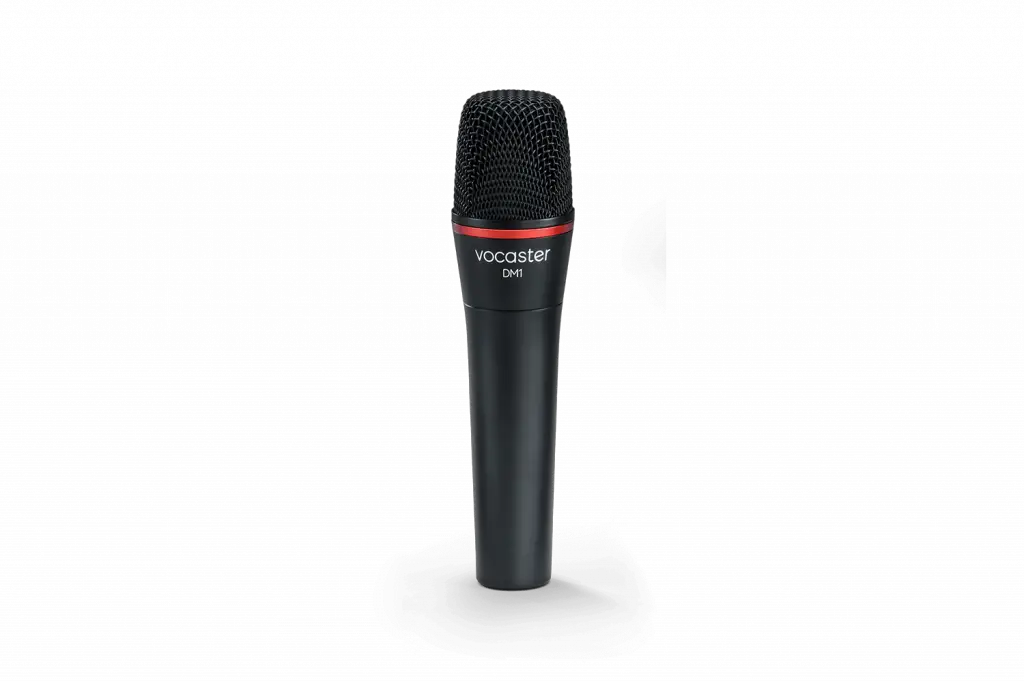
You might be wondering why you would need a microphone for vocals and guitar.
After all, both of these instruments can be quite loud, and you might be able to get away with just a regular microphone.
However, there are a few reasons why you might want to use a separate microphone for each of these instruments.
First, each instrument has its own unique sound, and you might want to capture that sound separately.
Second, each instrument might be louder than the other at different times, and you might want to adjust the volume accordingly.
Disclosure: This post may contain affiliate links, which means we may receive a commission if you click a link and purchase something that we recommended. Read more about Affiliate disclosure here.
And finally, you might simply want to have more control over the sound of each instrument.
So, if you’re looking for the best microphone for vocals and acoustic guitar, here are 10 of the best options, both budget and high-end.
Read also,
The 10 best microphones for vocals and acoustic guitar
Blue Yeti (USB)
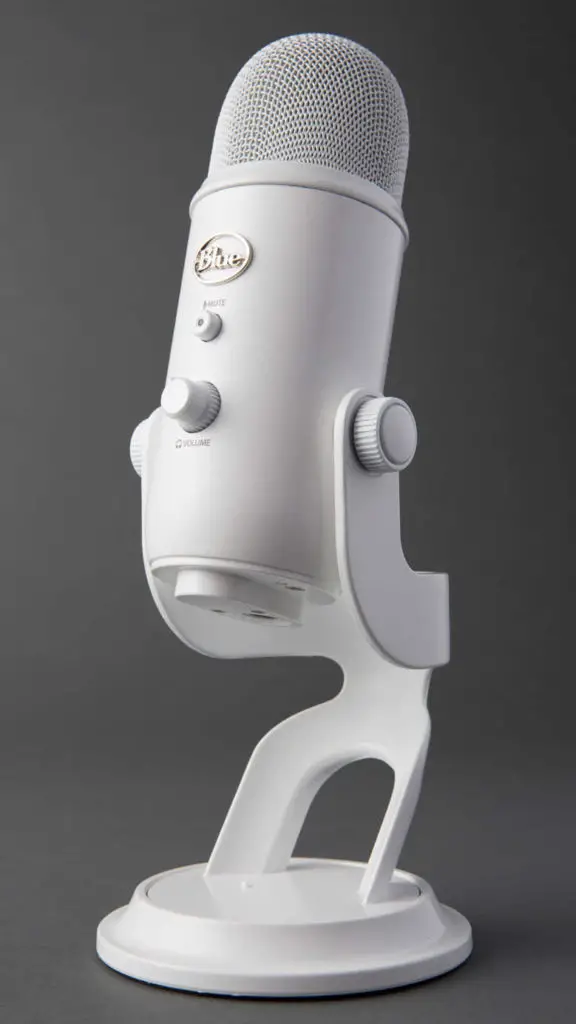
The Blue Yeti USB Microphone employs a unique, tri-capsule design and the ability to capture audio in up to 16-bit, 48 kHz resolution.
This studio-quality microphone is highlighted by a mic with an integrated headphone amp that’s backed by an independent gain control for latency-free monitoring.
The Blue Yeti is a versatile microphone that’s great for recording vocals, podcasts, music, interviews and even college lectures.
The Yeti features studio controls for headphone volume, pattern selection, instant mute and microphone gain putting you in charge of every level of the recording process.
Features
- Tri-capsule design
- Latency-free monitoring
- Independent gain control
- Instant mute function
- Mac and Windows compatible
- USB cable included
- Can be used for a variety of purposes such as recording vocals, podcasts, music, interviews, and lectures.
- Has studio controls for headphone volume, pattern selection, instant mute, and microphone gain.
Pros
- Very versatile
- Records in up to 16-bit, 48 kHz resolution
- Features studio controls for headphone volume, pattern selection, instant mute and microphone gain
- Mac and Windows compatible
- USB cable included
Cons
- Some users have complained about the quality of the built-in headphone amplifier
- Some users have reported that the mic is too sensitive and picks up too much background noise
- Some users have found that the stand is not very sturdy
Verdict
The Blue Yeti USB Microphone is a versatile microphone that’s great for recording vocals, podcasts, music, interviews and even college lectures.
The Yeti features studio controls for headphone volume, pattern selection, instant mute and microphone gain—putting you in charge of every level of the recording process.
The Blue Yeti is a great choice for anyone looking for a versatile and high-quality microphone for vocals and guitar.
Spark SL (XLR)

The Blue Blackout Spark SL is a studio large-diaphragm condenser microphone that captures stunning-quality recordings for vocals, guitars, drums, pianos and more.
The microphone ensures a pure signal with class-A circuitry and effectively minimizes off-axis feedback with a cardioid polar pattern.
With a switchable 100 Hz high-pass filter and a -20 dB pad, the Spark SL provides the ultimate versatility and you can capture the detail of any sound with a frequency range between 20 Hz to 20 kHz and an SPL of 136dB.
The microphone capsule is designed for transparent, neutral sound and a JFET design keeps the capsule’s backplate evenly charged for a consistently transparent and even signal.
This runs on 48V phantom power and provides a dynamic range of 119.6 dB. A custom shockmount and a wooden storage box are included in the package.
Features
- Studio large-diaphragm condenser microphone
- Class-A circuitry
- Cardioid polar pattern
- 100 Hz high-pass filter
- -20 dB pad
- Frequency range: 20 Hz to 20 kHz
- SPL: 136dB
- Dynamic range: 119.6 dB
- 48V phantom power
- Custom shockmount
- Wooden storage box included
Pros
- Stunning-quality recordings for vocals, guitars, drums, pianos and more
- Exceptional versatility
- Capture the detail of any sound
- Class-A circuitry
- Cardioid polar pattern
- Custom shockmount included
- Wooden storage box included
Cons
– None
Verdict
The Blue Blackout Spark SL is a studio large-diaphragm condenser microphone that captures stunning-quality recordings for vocals, guitars, drums, pianos and more.
The microphone ensures a pure signal with class-A circuitry and effectively minimizes off-axis feedback with a cardioid polar pattern.
So, if you are looking for a versatile and high-quality microphone for both guitar and vocals then the Spark SL is an excellent option.
Shure SM 58LC (XLR)
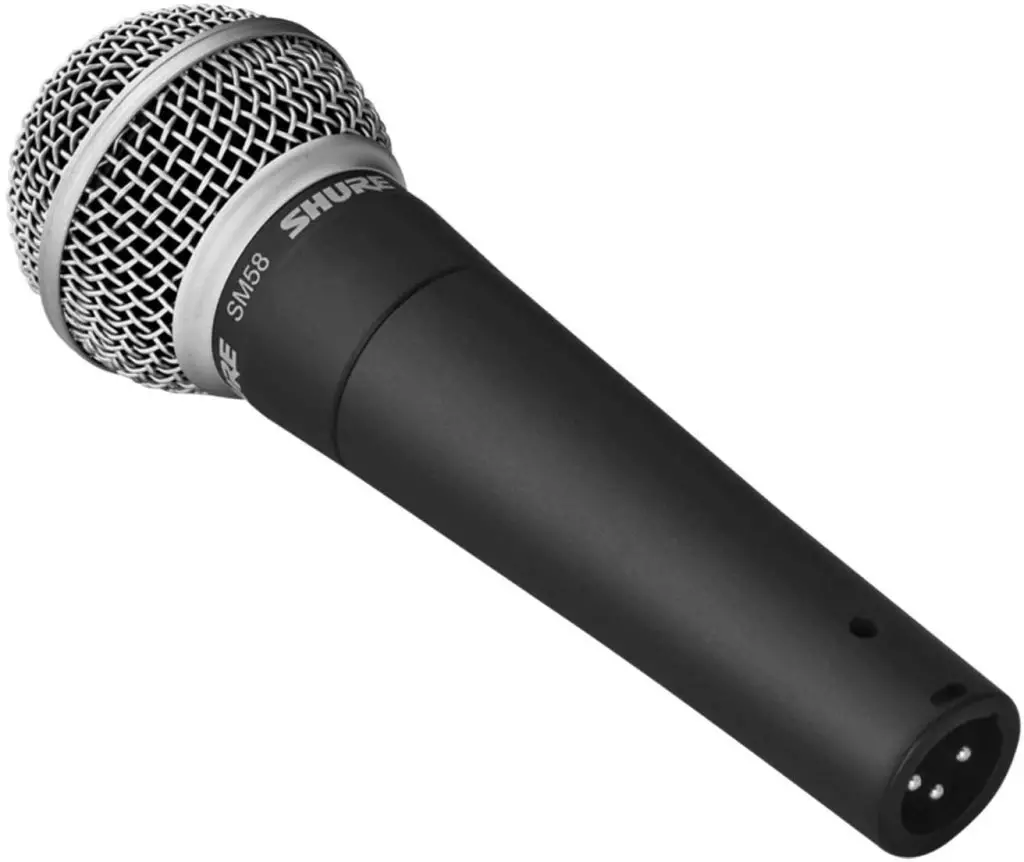
The Shure SM58 LC is a unidirectional (cardioid) dynamic vocal microphone for professional vocal use in sound reinforcement and studio recording.
A built-in spherical filter minimizes wind and breath “pop” noise, making this headset ideal for outdoor use. The primary sound source is isolated and captured by the mic element, while other off-axis sounds are rejected, resulting in a clear, focused sound.
The SM58 has a tailored vocal response for a sound that is a world standard.
The SM58 will perform consistently even with rough handling thanks to its rugged construction, a tried-and-true shockmount system, and a steel-mesh grille that protects the cartridge from wear and abuse.
Outdoors or indoors, singing or speech, the SM58 is one of the top choices of professionals worldwide.
Features
- Unidirectional (cardioid) dynamic vocal microphone
- Built-in spherical wind and pop filter
- Tailored vocal response for sound which is a world standard
- Rugged construction
- Proven shockmount system
- Steel-mesh grille
- Effective isolation of the desired sound source
- Minimization of background noise
Pros
- The Shure SM58 LC is a unidirectional (cardioid) dynamic vocal microphone for professional vocal use in sound reinforcement and studio recording.
- A highly effective, built-in, spherical filter minimizes wind and breath “pop” noise.
- The SM58 has a tailored vocal response for a sound that is a world standard.
- Rugged construction, a proven shockmount system, and a steel-mesh grille ensure that even with rough handling, the SM58 will perform consistently.
- Outdoors or indoors, singing or speech, the SM58 is the overwhelming choice of professionals worldwide.
Cons
- None that I can think of!
Verdict
The Shure SM58 LC is a unidirectional (cardioid) dynamic vocal microphone for professional vocal use in sound reinforcement and studio recording.
However, you can also use it for the guitar.
The SM58 has a tailored vocal response for a sound that is a world standard. That’s why it is perfect for both guitar and vocals.
Shure SM57 (XLR)
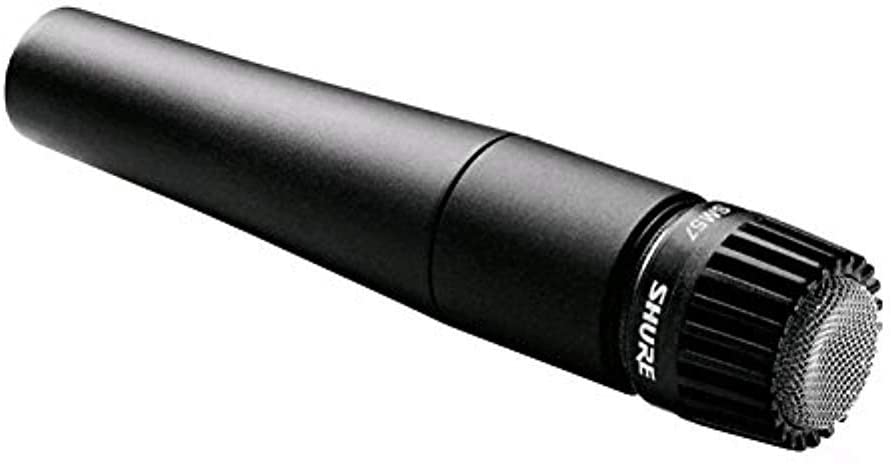
The Shure SM57 is a legendary dynamic microphone, ideal for live sound reinforcement and recording.
With its bright, clean sound and contoured frequency response, the SM57 is an excellent choice for a wide variety of applications, including drums, guitar, and woodwinds.
The SM57’s uniform cardioid pickup pattern isolates the main sound source while reducing background noise, and its pneumatic shock-mount system cuts down on handling noise.
The SM57 is also extremely durable, making it a great choice for performers who need a reliable, road-worthy microphone.
Features
- Bright, clean sound
- Contoured frequency response
- Uniform cardioid pickup pattern
- Pneumatic shock-mount system
- Extremely durable
Pros
- Industry-standard for performance and recording
- Handheld or mountable microphone for guitars, vocals, and other instruments in live sound and recording applications
- Dynamic cartridge with cardioid polar pattern
- Contoured frequency response for clean, instrumental reproduction and rich vocal pickup
Cons
- None
Verdict
The Shure SM57 is a legendary dynamic microphone, ideal for live sound reinforcement and recording.
With its bright, clean sound and contoured frequency response, the SM57 is an excellent choice for a wide variety of applications, including drums, guitar, and woodwinds.
You can also use it in vocals.
Audio-Technica AT2020 (XLR)

The Audio-Technica AT2020 is a side-address studio condenser microphone that is perfect for home-studio applications.
It features a custom-engineered low-mass diaphragm that provides extended frequency response and superior transient response.
The AT2020 also has a cardioid polar pattern that reduces pickup of sounds from the sides and rear, improving isolation of desired sound source.
The microphone comes with a pivoting, threaded stand mount that attaches securely for easy and precise placement of the microphone.
The Audio-Technica AT2020 is a great choice for any home studio or project studio. It is a versatile microphone that can be used for vocals, acoustic guitar, or any other instrument.
The AT2020 is also a great choice for podcasting or streaming.
Features
- Cardioid polar pattern reduces pickup of sounds from the sides and rear, improving isolation of the desired sound source
- Custom-engineered low-mass diaphragm provides extended frequency response and superior transient response
- Pivoting, threaded stand mount attaches securely for easy and precise placement of the microphone
- Included stand mount fits 5/8″-27 threaded stands
- Also includes a 5/8″-27 to 3/8″-16 threaded adapter
- Frequency response: 20-20,000 Hz
- Open circuit sensitivity: -37 dB (14.1 mV) re 1V at 1 Pa
- Impedance: 100 ohms
- Maximum input sound level: 144 dB SPL, 1 kHz at 1% T.H.D.
- Noise: 20 dB SPL
- Dynamic range (typical): 124 dB, 1 kHz at Max SPL
- Signal-to-noise ratio: 74 dB, 1 kHz at 1 Pa
- Phantom power requirements: 48V DC, 2 mA typical
Pros
- Low-mass diaphragm for extended frequency response and superior transient response
- Cardioid polar pattern reduces pickup of sounds from the sides and rear
- Pivoting, threaded stand mount for easy and precise placement
- Includes stand mount and 5/8″-27 to 3/8″-16 threaded adapter
Cons
- Some users have reported that the microphone is slightly sensitive to handling noise
Verdict
The Audio-Technica AT2020 is a side-address studio condenser microphone that is perfect home and small studios.
It features a custom-engineered low-mass diaphragm that provides extended frequency response and superior transient response.
The AT2020 also has a cardioid polar pattern that reduces pickup of sounds from the sides and rear, improving isolation of desired sound source.
Beyerdynamic M160 (XLR)

Beyerdynamic’s M 160 is a dynamic double ribbon microphone featuring a hyper-cardioid polar pattern, effective for all types of remote and in-studio voice reproduction.
The M 160 is a compact, lightweight microphone with a non-glare black finish that’s ideal for voice-over recording and other instruments like guitars and drums.
In conjunction with the M 130 dynamic double ribbon microphone (sold separately), the M 160 is ideal for stereo recordings in MS (Mid Side) technique.
Features
- Double ribbon microphone transducer
- Hypercardioid polar pattern
- Extended frequency response
- Excellent transparency and transient response
- Compact and rugged design
- Warm and natural sound
Pros
- Unique double ribbon microphone transducer
- Hypercardioid polar pattern
- Extended frequency response
- Excellent transparency and transient response
- Compact and rugged design
- Warm and natural sound
Cons
- May require phantom power
- Relatively high price tag
Verdict
The Beyerdynamic M 160 is a high-quality microphone that is perfect for a variety of recording and live sound applications.
Its unique double ribbon transducer provides extended frequency response and exceptional transparency, while its compact and rugged design makes it perfect for use in both studio and live settings.
Aston Spirit Condenser Microphone (XLR)

The Aston Spirit Condenser Microphone is a 1″ gold evaporated capsule, high-performance switchable pattern microphone.
The microphone’s polar pattern, which is indicated by a switch on the mic body, can be changed between Omni, Cardioid and Figure-of
It’s suitable for a wide range of instruments, and it shines on acoustic guitar and vocals. Its hand-picked capsule is enhanced with high-end
The Spirit is designed to produce a wonderfully open sound with sparkling harmonic overtones.
The AGK Audio X-O is a professional-quality, super-affordable microphone that gives you great results in an incredibly low price. It’s extremely versatile and can be used for a variety of applications, from vocals to acoustic guitar.
Features
- Multi-pattern Microphone
- Built-in Pop filter
- End Caps Direct to stand microphone mounting
- Capsule The Aston Sound Developed by Professional Artists, Engineers and Producers
Pros
- The Aston Spirit Condenser Microphone is a high-performance, switchable pattern, microphone utilizing a 1” gold evaporated capsule.
- A switch on the mic body selects from Omni, Cardioid, or Figure-of-Eight polar patterns.
- It is versatile enough to use with most instruments and excels on acoustic guitar and vocals.
- The Spirit is designed to deliver a beautifully open sound with sparkling harmonics.
- This highly accurate microphone gives a stunningly natural and transparent recording, capturing all the detail in the high range but without adding the harshness that some condenser microphones seem to.
Cons
- The Spirit is a bit pricey compared to some other microphones on the market.
Verdict
The Aston Spirit is a great choice for anyone looking for a high-quality, versatile condenser microphone. It sounds great on a wide range of instruments and voices, and is sure to bring out the best in your recordings.
Neumann TLM-102 Microphone (XLR)

The Neumann TLM 102 MT is a large-diaphragm studio microphone that offers legendary Neumann sound at an affordable price.
It boasts a maximum sound pressure level of 144 dB, which permits the recording of percussion, drums, amps and other very loud sound sources.
Quieter instruments also benefit from the TLM 102 MT’s very fast transient response.
And when it comes to vocals and speech, the TLM 102 MT really shines: a slight boost above 6 kHz provides for excellent presence of the voice in the overall mix.
Up to 6 kHz, the frequency response is extremely linear, ensuring minimal coloration and a clearly defined bass range.
Features
- Large-diaphragm microphone
- Cardioid directional characteristic
- Compact design
- Very high maximum sound pressure level
- Slight presence boost above 6 kHz
- Transformerless circuitry
- Available in two finishes: nickel and matte black
Pros
- Compact design
- Very high maximum sound pressure level
- Slight presence boost above 6 kHz
- Transformerless circuitry
- Available in two finishes: nickel and matte black
Cons
- None
Verdict
The Neumann TLM 102 MT is a great entry-level studio microphone that offers excellent sound quality and features. It’s perfect for those on a budget who still want Neumann quality.
Rode NT (USB)
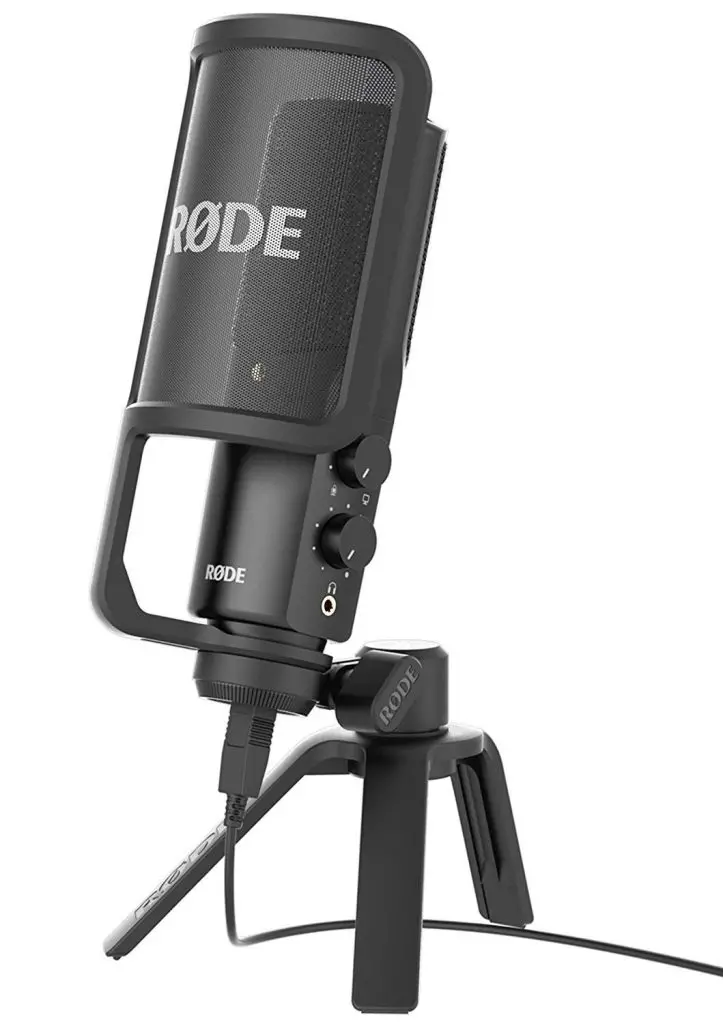
The Rode NT-USB is a versatile microphone that can be used for singing and musical performances as well as spoken applications like podcasting and voice-over.
It is compatible with all major recording software on both Windows and Mac OS computers, as well as the Apple iPad using Rode Rec, Garage Band, or other compatible apps.
You will also need a USB connection adaptor, such as the Apple Camera Connection Kit, to use it on an Apple iPad.
The NT-USB’s main jack features a zero-latency stereo headphone monitoring (3.5mm) connection, which allows you to listen to the microphone input in real-time, without any delay or lag.
A premium pop-filter is included, which sits atop the mic’s base and places the filter at the optimum distance from the capsule to minimize plosives (hard ‘p’ and ‘b’ sounds) during singing or speech.
Features
- Zero-latency monitoring
- Direct mix control between mic input and source output
- Compatible with Apple iPad
- Power options: USB bus powered
- Acoustic principle: Pressure gradient
- Active electronics: JFET impedance converter with bipolar output buffer, A/D converter 16bit 48kHz
- Capsule: 0.50″
- Polar Pattern: Cardioid
- Resolution: 16-bit
- Frequency Range: 20Hz – 20kHz
- Maximum SPL: 110dB SPL (@ 1kHz, 1% THD into 1KΩ load)
Pros
- Zero-latency monitoring
- Direct mix control between mic input and source output
- Compatible with Apple iPad
- Power options: USB bus powered
Cons
- The gain setting can be too high, resulting in a noisy recording.
- The microphone is not compatible with Linux computers.
- The included stand is not very sturdy.
Verdict
The Audio-Technica AT2020USB+ is a USB microphone designed for both home and professional studio recording.
It is ideal for podcasting, voice-over, and home studio recording. This mic offers a wide frequency response and a low-mass diaphragm for superior performance.
The USB output allows the microphone to be used with both Mac and Windows computers. These features made it a good option for guitar and vocal recordings.
Shure MV51 (USB)
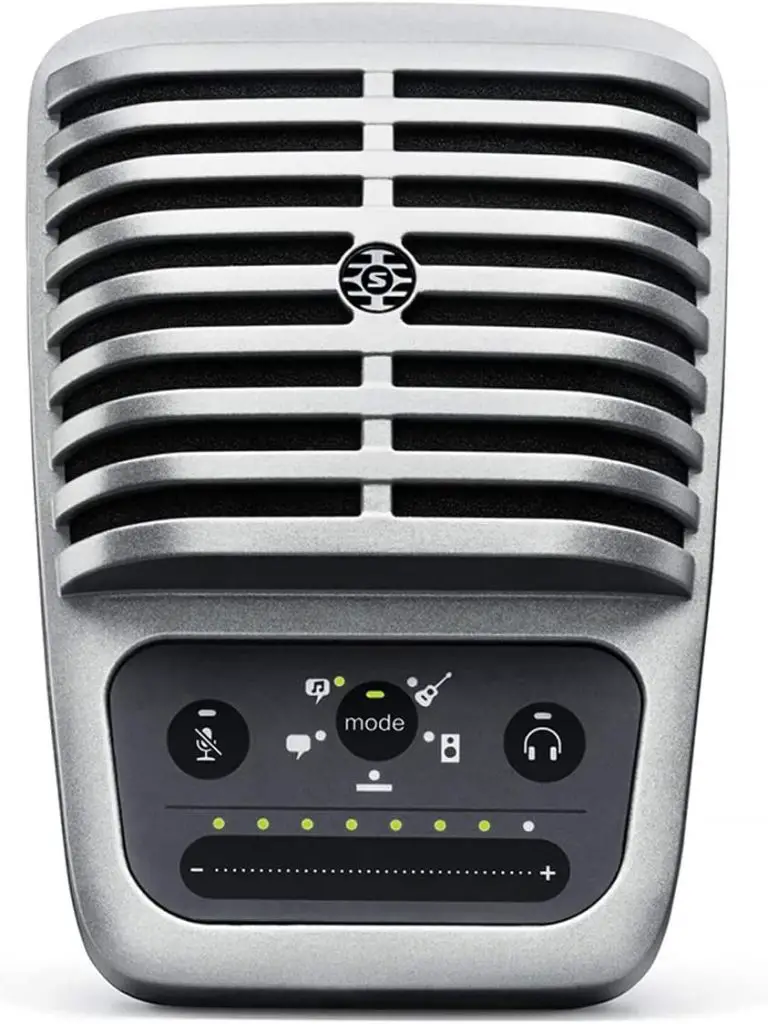
The Shure MV51 is a high-quality digital audio capture microphone that seamlessly connects to any Mac, PC, iPhone, iPod and iPad devices.
It includes five onboard DSP preset modes to provide optimal recording results.
The MV51 also has a unique onboard touch panel control for quick access to gain, mute and headphone volume adjustments.
The 1-inch capsule element provides unmatched audio results, which are easily monitored in real time via the built-in 1/8″ (3.5mm) headphone output.
The Shure MV51 is a complete recording solution when convenience is required without sacrificing quality.
Features
- All-metal construction
- Vintage-inspired design
- Seamlessly connects to any Mac, PC, iPhone, iPod and iPad devices
- Five onboard DSP preset modes
- Unique onboard touch panel control
- 1-inch capsule element
- Built-in 1/8″ (3.5mm) headphone output
- Integrated kickstand compatible with any standard mic stand
Pros
- The Shure MV51 mic is a high-quality digital audio capture microphone that seamlessly connects to any Mac, PC, iPhone, iPod and iPad devices.
- The MV51 includes five onboard DSP preset modes to provide optimal recording results.
- The unique onboard touch panel control allows for quick access to gain, mute and headphone volume adjustments.
- The 1-inch capsule element provides unmatched audio results.
- The built-in 1/8″ (3.5mm) headphone output allows for easy monitoring of the audio results in real time.
- The Shure MV51 is a complete recording solution when convenience is required without sacrificing quality.
Cons
- The Shure MV51 mic may be too expensive for some people.
- Some people may not like the vintage-inspired design.
Verdict
The Shure MV51 is a high-quality digital audio capture microphone that seamlessly connects to any Mac, PC, iPhone, iPod and iPad devices.
It includes five onboard DSP preset modes to provide optimal recording results.
The MV51 also has a unique onboard touch panel control for quick access to gain, mute and headphone volume adjustments.
The 1-inch capsule element provides unmatched audio results, which are easily monitored in real time via the built-in 1/8″ (3.5mm) headphone output.
The Shure MV51 is a complete recording solution when convenience is required without sacrificing quality.
What to look for when buying a microphone
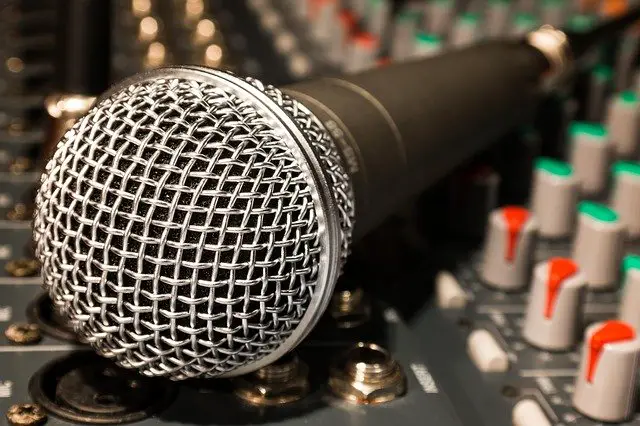
Now that you know some of the best microphones for vocals and acoustic guitar, let’s talk about what to look for when buying a microphone.
There are a few things you’ll want to keep in mind when choosing a microphone, such as:
- The type of microphone
- Connectivity USB or XLR
- The size of the diaphragm
- The frequency response
- The sensitivity
- The price
Let’s take a closer look at each of these factors.
Type of microphone
There are two main types of microphones: condenser and dynamic.
Condenser microphones are typically more sensitive and have a wider frequency response than dynamic microphones.
This makes them great for capturing detail, but they can also be more susceptible to background noise.
Dynamic microphones, on the other hand, are less sensitive and have a narrower frequency response.
This makes them less likely to pick up background noise, but they might not be able to capture all the detail of the sound.
Connectivity
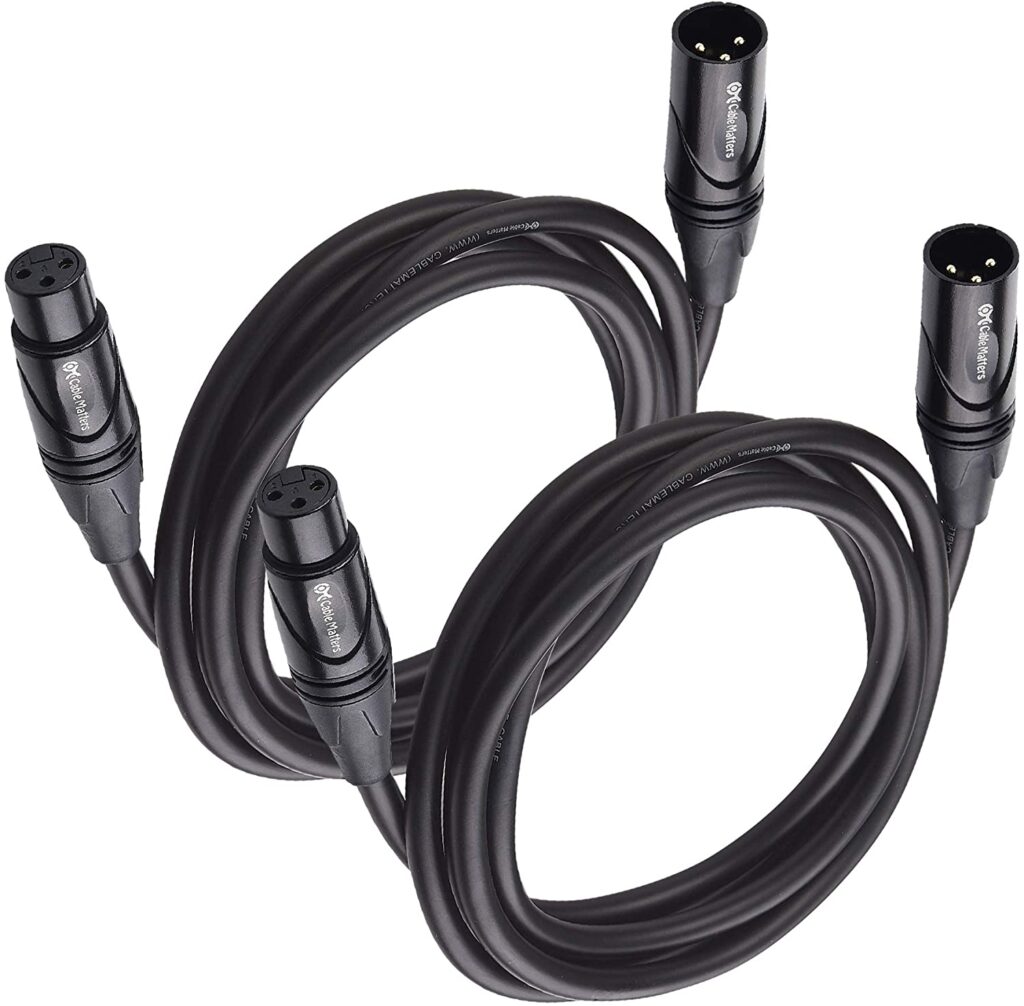
Another important factor to consider is connectivity.
Most microphones will either use a USB connection or an XLR connection.
USB microphones are typically less expensive and easier to set up, but they might not be compatible with all audio interfaces.
XLR microphones, on the other hand, are more expensive and require an audio interface, but they offer better sound quality.
Size of the diaphragm
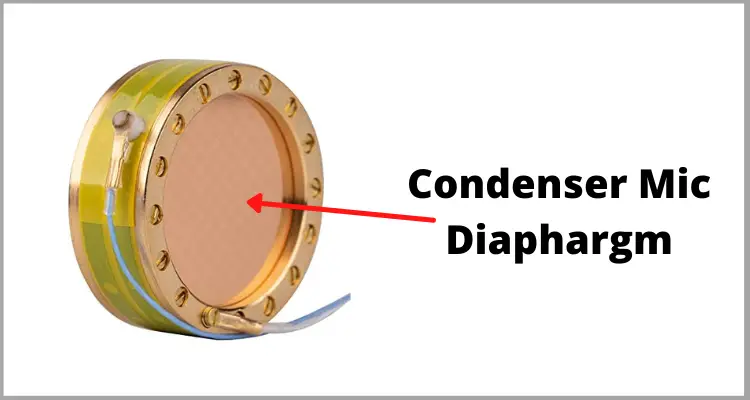
The size of the diaphragm is another important factor to consider.
Smaller diaphragms are typically better for capturing detail, while larger diaphragms are better for capturing the overall sound.
Frequency response
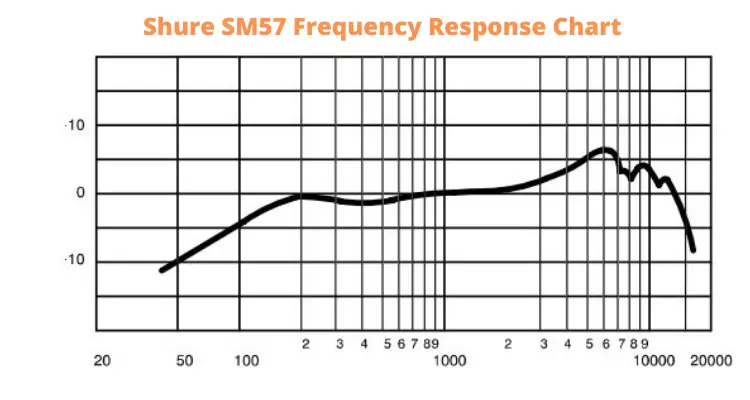
The frequency response is the range of frequencies that a microphone can capture.
The wider the frequency response, the more detail the microphone can capture.
However, wider frequency responses can also be more susceptible to background noise.
Sensitivity
The sensitivity is the amount of sound that a microphone can capture.
Higher-sensitivity microphones can pick up more sound, but they can also be more susceptible to background noise.
Price
Of course, one of the most important factors to consider is price.
Budget microphones will typically cost less than $100, while high-end microphones can cost upwards of $1000.
It’s important to find a balance between price and quality and to choose the best microphone for your needs.
How to use a microphone for vocals and acoustic guitar
Now that you know what to look for when buying a microphone, let’s talk about how to properly use a microphone for vocals and acoustic guitar.
There are a few things you’ll want to keep in mind, such as:
- The distance from the microphone
- The angle of the microphone
- The position of the microphone
- The type of microphone
Let’s take a closer look at each of these factors.
The distance from the microphone
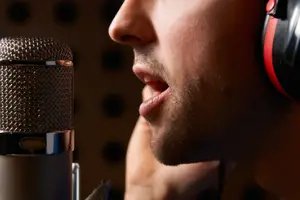
One of the most important factors to consider is the distance from the microphone.
If you’re too far away from the microphone, your voice will sound faint and distant.
If you’re too close to the microphone, your voice will sound loud and harsh.
You’ll want to find a balance between these two extremes.
A good rule of thumb is to hold the microphone about 6 inches away from your mouth.
The angle of the microphone
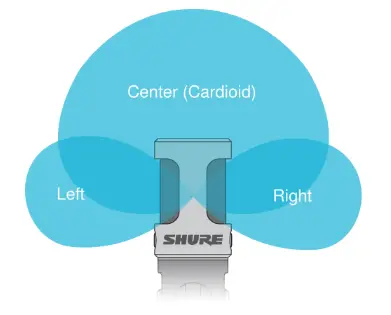
Another important factor to consider is the angle of the microphone.
If the microphone is pointing directly at your mouth, it will pick up more of your breath and your voice will sound nasal.
If the microphone is pointing away from your mouth, it will pick up less of your breath and your voice will sound more natural.
You’ll want to experiment with different angles to find the one that sounds best to you.
The position of the microphone
The position of the microphone is also important.
If the microphone is too low, your voice will sound muffled. If the microphone is too high, your voice will sound thin.
You’ll want to position the microphone so that it’s at about the same level as your mouth.
The type of microphone
Finally, you’ll want to consider the type of microphone.
Each type of microphone has its own strengths and weaknesses.
For example, dynamic microphones are better for capturing loud sounds, while condenser microphones are better for capturing detail.
You’ll want to choose the type of microphone that best suits your needs.
Conclusion
When choosing a microphone for vocals and acoustic guitar, it is important to consider the tone that you are looking for.
Different microphones will give you different tones, so it is important to find the right one for your needs.
If you are looking for a warm, rich tone, then a condenser microphone may be the best option for you.
If you are looking for a brighter tone, then a dynamic microphone may be better suited for your needs.
It is also important to remember that not all microphones are created equal.
Some microphones are designed specifically for vocals and acoustic guitar, while others can be used for a variety of applications.
When choosing a microphone, make sure to read reviews and compare prices to find the best option for your budget.
Related,

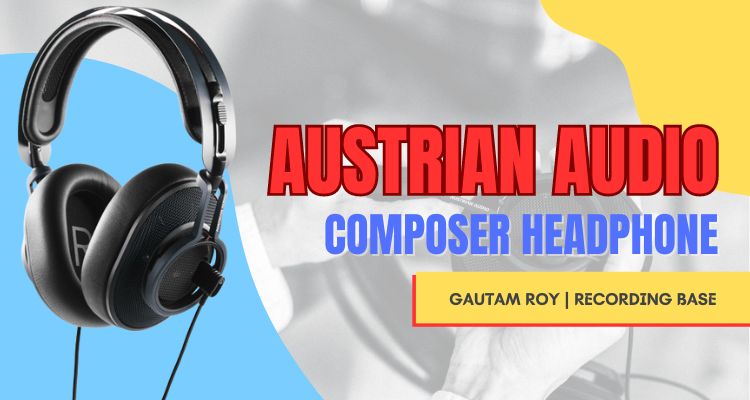
![Heritage Audio i73 PRO Series Audio Interfaces Review [2024]](https://www.recordingbase.com/wp-content/uploads/2024/01/Heritage-Audio-i73-pro-series.jpg)
